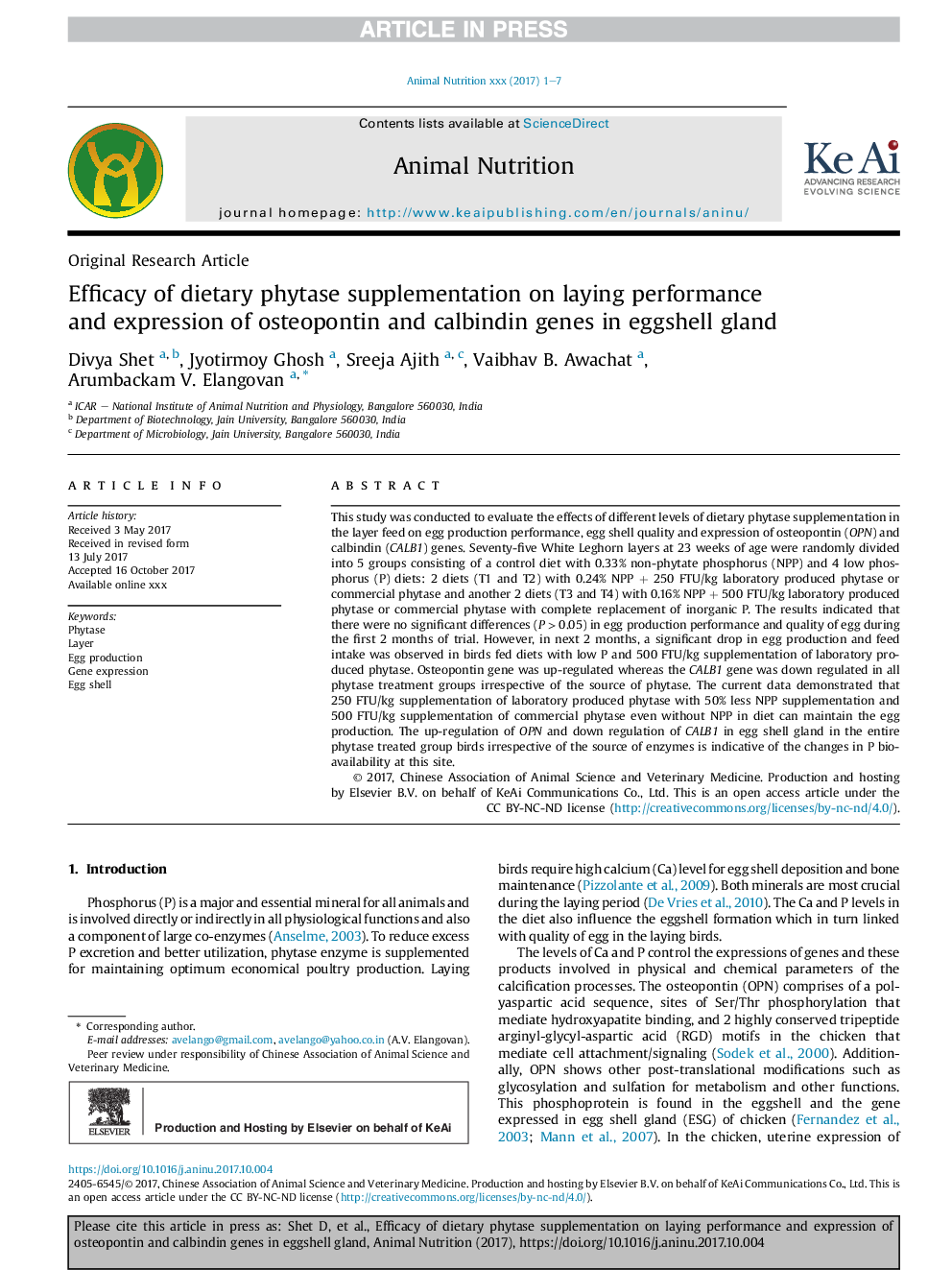| Article ID | Journal | Published Year | Pages | File Type |
|---|---|---|---|---|
| 8882524 | Animal Nutrition | 2018 | 7 Pages |
Abstract
This study was conducted to evaluate the effects of different levels of dietary phytase supplementation in the layer feed on egg production performance, egg shell quality and expression of osteopontin (OPN) and calbindin (CALB1) genes. Seventy-five White Leghorn layers at 23 weeks of age were randomly divided into 5 groups consisting of a control diet with 0.33% non-phytate phosphorus (NPP) and 4 low phosphorus (P) diets: 2 diets (T1 and T2) with 0.24% NPPÂ +Â 250Â FTU/kg laboratory produced phytase or commercial phytase and another 2 diets (T3 and T4) with 0.16% NPPÂ +Â 500Â FTU/kg laboratory produced phytase or commercial phytase with complete replacement of inorganic P. The results indicated that there were no significant differences (PÂ >Â 0.05) in egg production performance and quality of egg during the first 2 months of trial. However, in next 2 months, a significant drop in egg production and feed intake was observed in birds fed diets with low P and 500Â FTU/kg supplementation of laboratory produced phytase. Osteopontin gene was up-regulated whereas the CALB1 gene was down regulated in all phytase treatment groups irrespective of the source of phytase. The current data demonstrated that 250Â FTU/kg supplementation of laboratory produced phytase with 50% less NPP supplementation and 500Â FTU/kg supplementation of commercial phytase even without NPP in diet can maintain the egg production. The up-regulation of OPN and down regulation of CALB1 in egg shell gland in the entire phytase treated group birds irrespective of the source of enzymes is indicative of the changes in P bio-availability at this site.
Related Topics
Life Sciences
Agricultural and Biological Sciences
Animal Science and Zoology
Authors
Divya Shet, Jyotirmoy Ghosh, Sreeja Ajith, Vaibhav B. Awachat, Arumbackam V. Elangovan,
